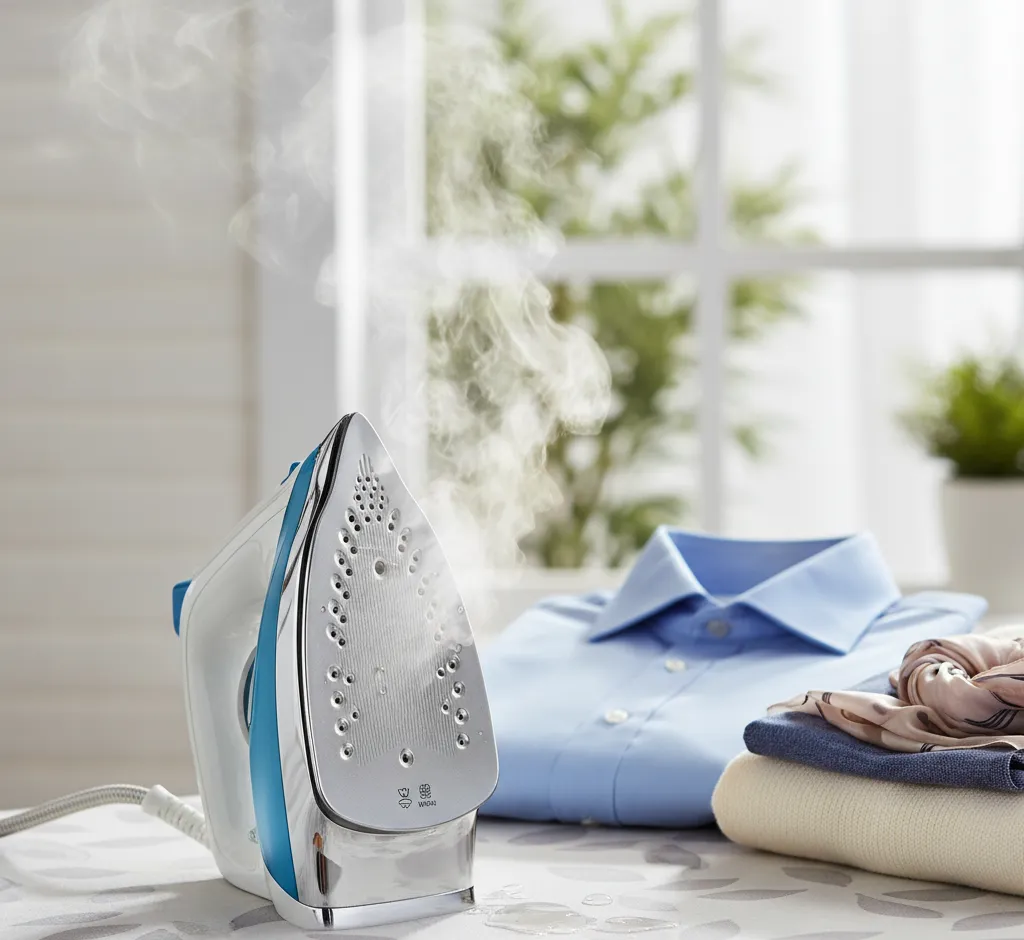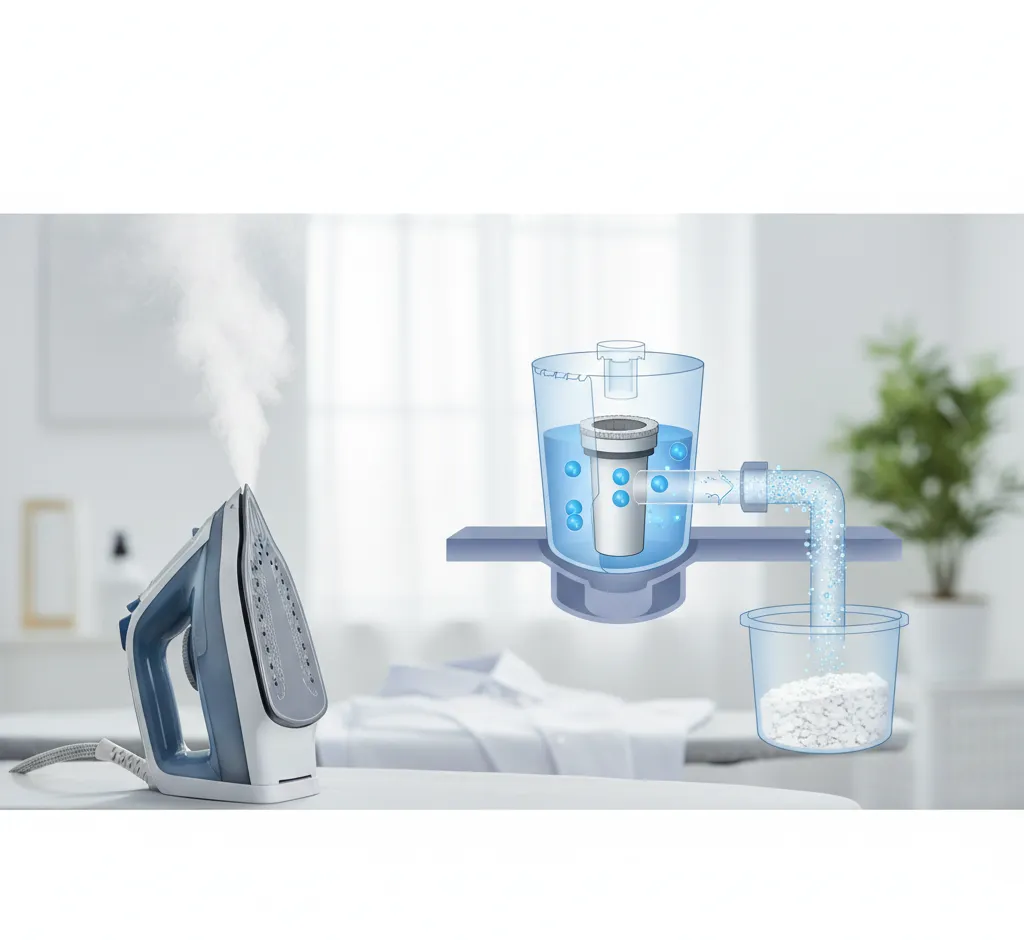Self-Cleaning Steam Irons: The Ultimate Time-Saver for Busy Families?
Is a self-cleaning steam iron worth the cost for your family? Discover how anti-calc technology saves time, prevents mineral stains, and extends your iron's lifespan in busy households. Essential buying guide.

The Limescale Lifeline: Why Self-Cleaning Irons are a Family Must-Have
For most families, laundry is a never-ending cycle, and the final stage—ironing—often feels like the biggest chore. It's the moment when speed meets precision, and when your steam iron decides to sputter, leak, or leave white, chalky marks on a freshly pressed work shirt, the frustration is immense. This is where the modern **self-cleaning steam iron** steps in, promising a revolution in garment care and, more importantly, a reclaiming of precious family time. But are they truly worth the investment for a busy household?
Understanding the Enemy: Limescale and Iron Performance
The primary culprit behind a sputtering, underperforming iron is **limescale**, a mineral buildup (mainly calcium carbonate) that comes from using ordinary tap water. This scale builds up in two critical areas:
- The Steam Vents: Clogging the small holes on the soleplate, which reduces steam output and effectiveness.
- The Water Chamber: Corroding internal components and eventually leading to leaks, spitting, and staining your clothes with white or brownish deposits.
In a family context, where the iron is used frequently—for school uniforms, work clothes, and bedding—this buildup happens rapidly, necessitating regular, tedious manual descaling with vinegar solutions or special kits. A non-maintained iron not only takes longer to use but also risks permanently damaging garments.
How the Self-Clean Feature Works: An Iron's Internal Detox
A self-cleaning steam iron is designed to combat this mineral buildup with minimal user intervention. While the exact mechanism varies by brand (e.g., 'Calc-Clean', 'Anti-Scale Cartridge'), the core process remains similar:
- Heating: The iron is filled with water (often to the MAX line) and heated to its highest temperature.
- Activation: The user unplugs the hot iron and holds it over a sink or basin, pressing the dedicated 'Self-Clean' button.
- Flushing: A powerful burst of steam and hot water is forcefully ejected from the soleplate's vents, carrying with it accumulated limescale, mineral deposits, and other impurities. This process essentially flushes the internal steam chamber and vents.
| System Type | Mechanism | User Maintenance |
|---|---|---|
| Self-Clean Function | High-pressure steam/water flush to expel scale. | Press button, hold over sink. (Required every 2-4 weeks) |
| Anti-Calc/Anti-Scale Cartridges | A replaceable resin filter that de-mineralizes water as it enters the tank. | Replace the cartridge every 3-6 months. |
| Limescale Collector/Rod | A removable collector rod that attracts and traps mineral deposits. | Remove and rinse the rod periodically (e.g., monthly). |
The Family Calculus: Analyzing the Investment's Value
For a family household, the decision to purchase a self-cleaning iron boils down to a cost-benefit analysis centered on **time savings**, **longevity**, and **garment protection**.
✅ Pro: Time and Effort Savings (The Busy Parent's Relief)
A family's laundry basket is often large, requiring multiple ironing sessions per week. Manual descaling can take 30-60 minutes of soaking and rinsing. A self-clean cycle, by contrast, typically takes only a few minutes of active engagement, or is completely passive if the iron uses an anti-calc cartridge. This saved time is directly converted back into family time, work time, or rest—a priceless commodity for busy parents.
✅ Pro: Extended Iron Lifespan
Limescale and corrosion are the primary reasons steam irons fail. By consistently and effectively removing internal buildup, the self-cleaning feature significantly prolongs the life of the heating element and steam chamber. This means fewer replacements and less electronic waste, making it a more sustainable and financially sensible long-term choice.
✅ Pro: Consistent, High-Quality Results
A clogged iron struggles to produce a strong, continuous jet of steam. Optimal steam is what allows the soleplate to glide effortlessly and effectively relax fabric fibers, quickly eliminating deep creases. A clean iron means maximum, consistent steam output, leading to faster, crisper results on items like cotton shirts, linens, and trousers. **Inconsistent performance** is one of the most common steam iron faults, and self-cleaning directly addresses this.
❌ Con: Higher Initial Cost
Irons equipped with advanced self-cleaning, anti-calc systems, and premium soleplates (ceramic, titanium) generally have a higher upfront cost than basic models. However, when measured against the cost of replacing two or three cheaper irons that fail prematurely due to scale, the initial premium often pays for itself.
❌ Con: Varies in Effectiveness
Not all 'self-clean' systems are created equal. Some budget-friendly irons feature only a basic flush function that is less effective than the dedicated anti-calc collectors or replaceable cartridges found in higher-end models. Consumers must look beyond the label and investigate the specific technology (e.g., is it a permanent collector, a replaceable filter, or just a steam flush?).
Key Features to Look for in a Family Iron
While the self-cleaning feature is essential, busy families should look for a model that combines this with other crucial design elements:
- Large Water Tank Capacity: A bigger tank (300ml+) reduces the need for frequent refills, minimizing interruptions during large loads.
- High Steam Shot/Output: Look for a continuous steam rate of $40g/min$ and a steam shot of $150-200g$ to tackle stubborn creases on denim and linen quickly.
- Safety Auto-Shutoff: An absolute necessity for a busy household, this feature turns the iron off if left motionless for a short period (usually 30 seconds horizontal, 8-15 minutes vertical).
- Drip-Stop Technology: Prevents water from leaking onto the fabric when ironing at lower temperatures, safeguarding delicate garments from water marks.
Maximizing Longevity: Cleaning Best Practices
Even with a self-cleaning function, a few simple practices will ensure the iron operates at peak performance for years:
1. The Water Debate: Tap vs. Distilled
The best practice is to always follow the manufacturer's guidance. While many modern self-cleaning irons are designed to handle tap water, using a 50/50 mix of tap and distilled water—or even just distilled water in hard-water areas—will drastically reduce the frequency needed for the self-clean cycle. **Never** use scented water, vinegar (unless manually descaling), or other chemical agents, as these can corrode the internal parts and void the warranty.
2. The Post-Ironing Ritual
After every use, especially before storage, empty the water tank completely. Leaving water inside allows scale to form as the water evaporates and prevents mineral-laden water from sitting against internal components.
3. Routine is Key
Don't wait for performance to degrade. If you iron more than three times a week, run the self-cleaning cycle or rinse the collector once a month. Prevention is easier and more effective than a cure.
The Final Verdict
For the average family facing weekly piles of laundry, the self-cleaning steam iron is **unequivocally worth the investment**. It's not just a fancy feature; it is an essential maintenance function that directly translates to better efficiency and less hassle. By mitigating the biggest problem with steam irons—mineral buildup—it ensures that your ironing is faster, your clothes are protected, and your appliance lasts longer. In the time-poor economy of a family household, investing in a tool that reliably streamlines a major chore is always a smart move.


